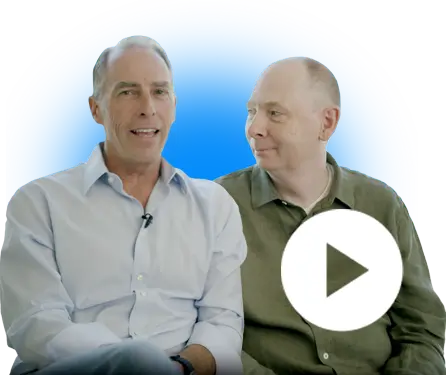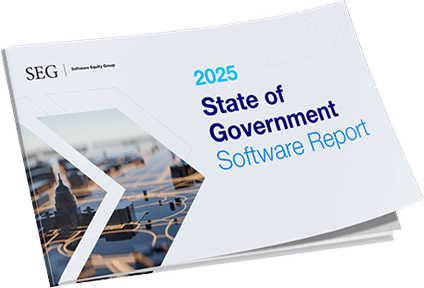Healthcare Software M&A Experts
Mastering the Vital Signs of Healthcare Software M&A
As esteemed M&A advisors with a distinctive focus on the healthcare software sector, we stand out with nearly 20 successful deals in this rapidly evolving space. Our in-depth knowledge extends beyond conventional M&A practices; we possess a nuanced understanding of the industry tailwinds, such as the pivotal role of Electronic Health Records (EHR), AI-based solutions, the surge in demand for telehealth and remote patient monitoring, and more. This intimate familiarity with the transformative trends shaping the healthcare software landscape uniquely positions us as leaders in providing strategic guidance tailored to your specific needs.

Healthcare Software M&A Overview
While we applaud the critical work of the men and women in the field, there exists an opportunity for improvement within the dominant industry in the world’s largest economy. Due to rising healthcare costs and the increasing prevalence of chronic illnesses, there is a pressing need for intelligent solutions to intervene. There’s no doubt the shortage of healthcare workers affects everyone. Waiting weeks for doctor’s appointments have become common, only to spend minutes with them during the visit. Healthcare SaaS aims to prioritize and improve the health and well-being of patients in damaged systems.
The robust landscape of healthcare software M&A activity reflects the industry’s dynamic response to key trends reshaping the healthcare sector.
As a result, deal volume has demonstrated enduring strength and consistency over the past five years. This sustained momentum underscores the sector’s resilience and continued attractiveness for investors and strategic acquirers. The data further reinforces the healthcare software industry’s pivotal role in the broader software M&A landscape, showcasing a vibrant ecosystem where innovation and strategic partnerships continue to thrive. Stay informed about these transformative industry trends by subscribing to our newsletter for the latest updates.
Healthcare Software
Annual M&A Deal Volume
The Technological Frontiers of Healthcare Software
Acute Healthcare Software:
The Acute Healthcare Software sector primarily focuses on software solutions tailored for hospitals and immediate patient care settings. SaaS plays a pivotal role in this sector by providing real-time collaboration tools, streamlined data management, and enhanced operational efficiency, ensuring timely and effective patient care.
Post-Acute Healthcare Software:
Post-Acute Healthcare Software is designed to cater to patient care beyond the hospital setting, including home health, rehabilitation centers, and long-term care facilities. SaaS solutions in this sector enable seamless communication, remote monitoring, and data sharing, fostering continuity of care, reducing readmission rates, and enhancing the overall patient experience.
Revitalizing Health: The Strategic Appeal of Healthcare Software Companies for Buyers & Investors
Investors and strategic buyers are increasingly attracted to healthcare software companies due to unique factors that transcend standard financial metrics. The mission-critical role of healthcare software in modernizing the healthcare system positions it as a necessity rather than a luxury. With a growing customer base, particularly among the aging baby boomer population, the healthcare industry ensures a steady demand for software solutions. Moreover, the stringent regulatory environment mandates strong compliance frameworks, prompting organizations to invest in software that mitigates risks. These factors collectively underscore the appeal of healthcare software companies as valuable investment opportunities within a dynamic and continually expanding sector.
Private equity companies have emerged as the majority of buyers in the healthcare software sector over the past three years. This shift marks a notable departure from the 50/50 split observed in the two years prior, highlighting the increasing dominance of private equity in recognizing the strategic value and growth potential within the healthcare software industry.
2023 Healthcare Software M&A Activity by Buyer Type
Navigating Healthcare’s Horizon: Industry Tailwinds
Transformative trends are moving the healthcare industry towards efficiency, patient-centric care, and overall well-being. Healthcare organizations are attempting to address workforce shortages by leveraging technology, especially Healthcare SaaS, as a strategic solution to fill crucial staffing gaps and enhance operational efficiency.
A shift towards patient-centered care is driven by growing research and consumer demand. Healthcare organizations are adopting a more patient-centered model that aims for personalized, collaborative, and comprehensive care. Business models are evolving, with providers somewhat embracing ambulatory care options to enhance cost-effectiveness and convenience in line with patient-centered care.
Today, the healthcare industry has a heightened focus on mental and behavioral health. Recognizing the link between physical and psychological well-being, healthcare providers are prioritizing cognitive and behavioral health services.
Browse some of the key tailwinds driving growth in the healthcare software space. For more trends and commentary, read our Healthcare trends blog.
Key Trends Driving a Digital Transformation in Healthcare
Healthcare costs are skyrocketing at an alarming rate, surpassing inflation, while mortality rates continue to climb. The undeniable urgency for change within the healthcare industry underscores the critical need for digital transformation.
The surge in AI-based solutions, ranging from cancer diagnostics to drug diversion analytics, underscores a growing appetite for innovative technologies that enhance diagnostics, analytics, and workflow automation.
Electronic Health Records (EHR) and Practice Management solutions are at the forefront, driving significant interest as healthcare organizations seek to streamline patient data management, scheduling, and billing processes.
A scarcity of qualified healthcare workers, especially in home health and nursing, presents a critical challenge for the industry that can be mitigated by technology to fill critical gaps in staffing.
The COVID-19 pandemic led to deferred non-emergency tests and elective procedures, resulting in significant revenue loss for healthcare organizations. Healthcare software solutions help enhance operational efficiency in the post-subsidy and high-inflation landscape.
Growing research and consumer demand are steering healthcare organizations towards a patient-centered model, emphasizing personalized, collaborative, and comprehensive care. Healthcare technology empowers physicians to understand patient needs, develop tailored treatment plans, and facilitate ongoing patient engagement.
Providers are embracing ambulatory care options to enhance cost-effectiveness and convenience in line with patient-centered care, driving a change in healthcare delivery models as telehealth, wearable device monitoring, and mobile apps become heavily adopted.



